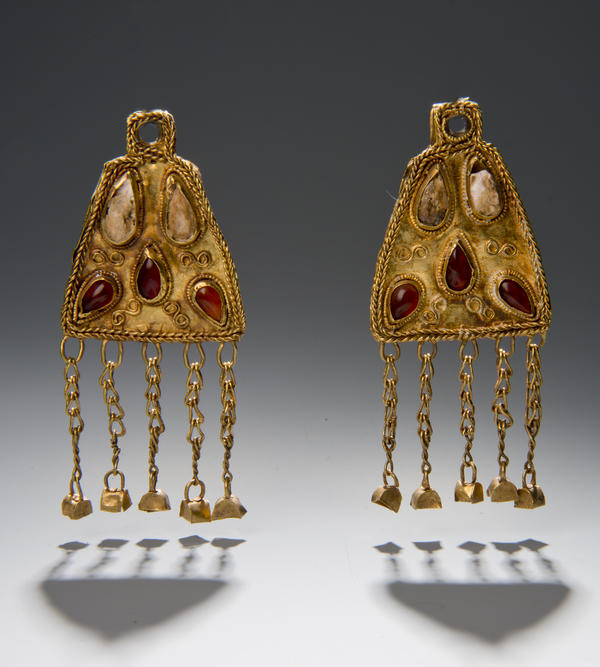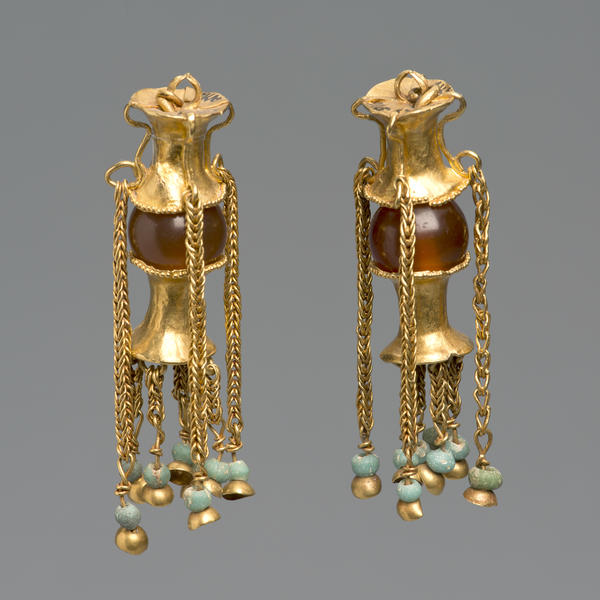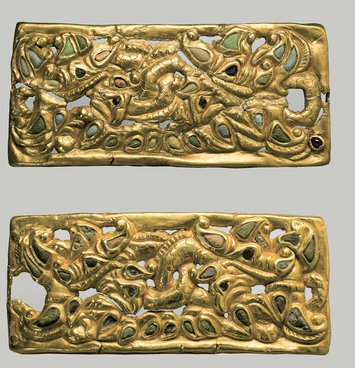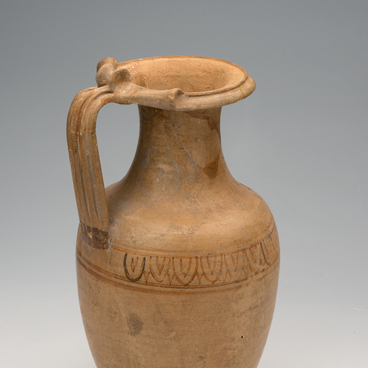The pendants were discovered in a rich female burial ground of the late Sarmatian period. The Sarmatians were ancient Iranian-speaking tribes that inhabited the Eurasian Steppe belt from the Danube to the Aral Sea from the 4th century BC to the first centuries CE. The late Sarmatian culture took shape in the second half of the 2nd century CE. At the time, the look of individual pieces of jewellery had changed a lot. The art of that time was dominated by the polychrome style, which was reflected in the design of jewellery, especially earrings and necklaces. It was then that ancient artists began to fill all planes of jewellery with glass or stone inlays and attach many pendants to the edges.
The female pieces of jewellery that were the predecessors of earrings are called pendants too. However, they did not pass though the earlobe but were attached to the headwear. Since the headwear has not survived in the grave, one may assume that it was made of leather or fabric.
The gold pendants of a trapezoidal shape from the female burial site are decorated with carnelian, coral and scan’ — a pattern of thin twisted wire. Five gold wire chains are soldered to the base, from each of them hangs a bell. This type of pendant is called “noise-making”. They played the role of amulets, charms, it was believed that the subtle ringing emitted by the jewellery had a magical meaning and protected its owner from evil forces. Such pendants and other jewellery in ancient times were associated with the cult of fertility and welfare. As child bearers, women needed the greatest protection — they wore a lot of noise-making jewellery. The latter were often decorated with charms-patterns and stones, which, according to legend, were also considered amulets and possessed protective power.
The female pieces of jewellery that were the predecessors of earrings are called pendants too. However, they did not pass though the earlobe but were attached to the headwear. Since the headwear has not survived in the grave, one may assume that it was made of leather or fabric.
The gold pendants of a trapezoidal shape from the female burial site are decorated with carnelian, coral and scan’ — a pattern of thin twisted wire. Five gold wire chains are soldered to the base, from each of them hangs a bell. This type of pendant is called “noise-making”. They played the role of amulets, charms, it was believed that the subtle ringing emitted by the jewellery had a magical meaning and protected its owner from evil forces. Such pendants and other jewellery in ancient times were associated with the cult of fertility and welfare. As child bearers, women needed the greatest protection — they wore a lot of noise-making jewellery. The latter were often decorated with charms-patterns and stones, which, according to legend, were also considered amulets and possessed protective power.
The clothes of the buried woman were decorated with gold sew-on patches shaped as hemispheres and petals. The petal-shaped ones were additionally decorated with dot patterns along the edge and centre of the product. Such patches were attached to clothes through special pierced holes. If such a hole tore, then craftsmen made a new one and sewed the decor element again. Gold sew-on patches are found only in fairly rich graves.




